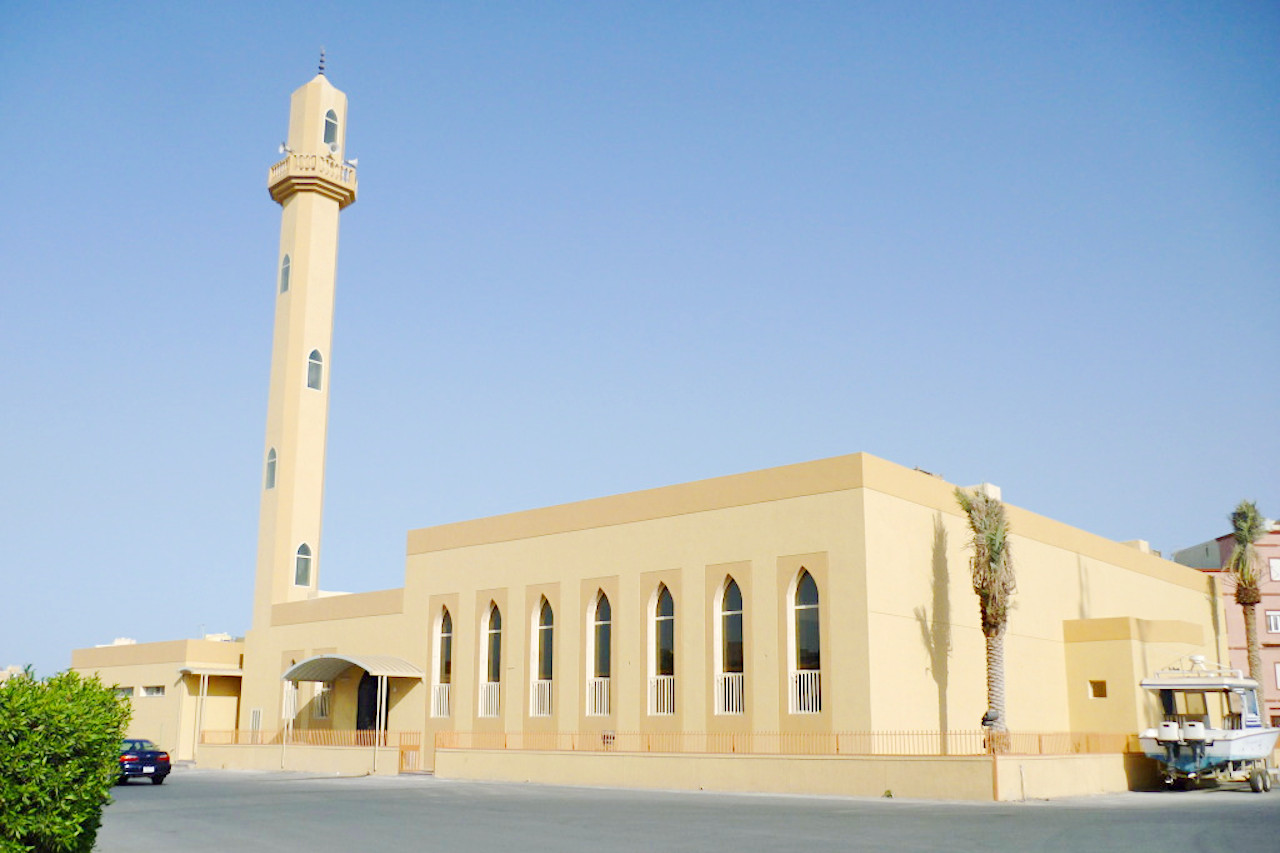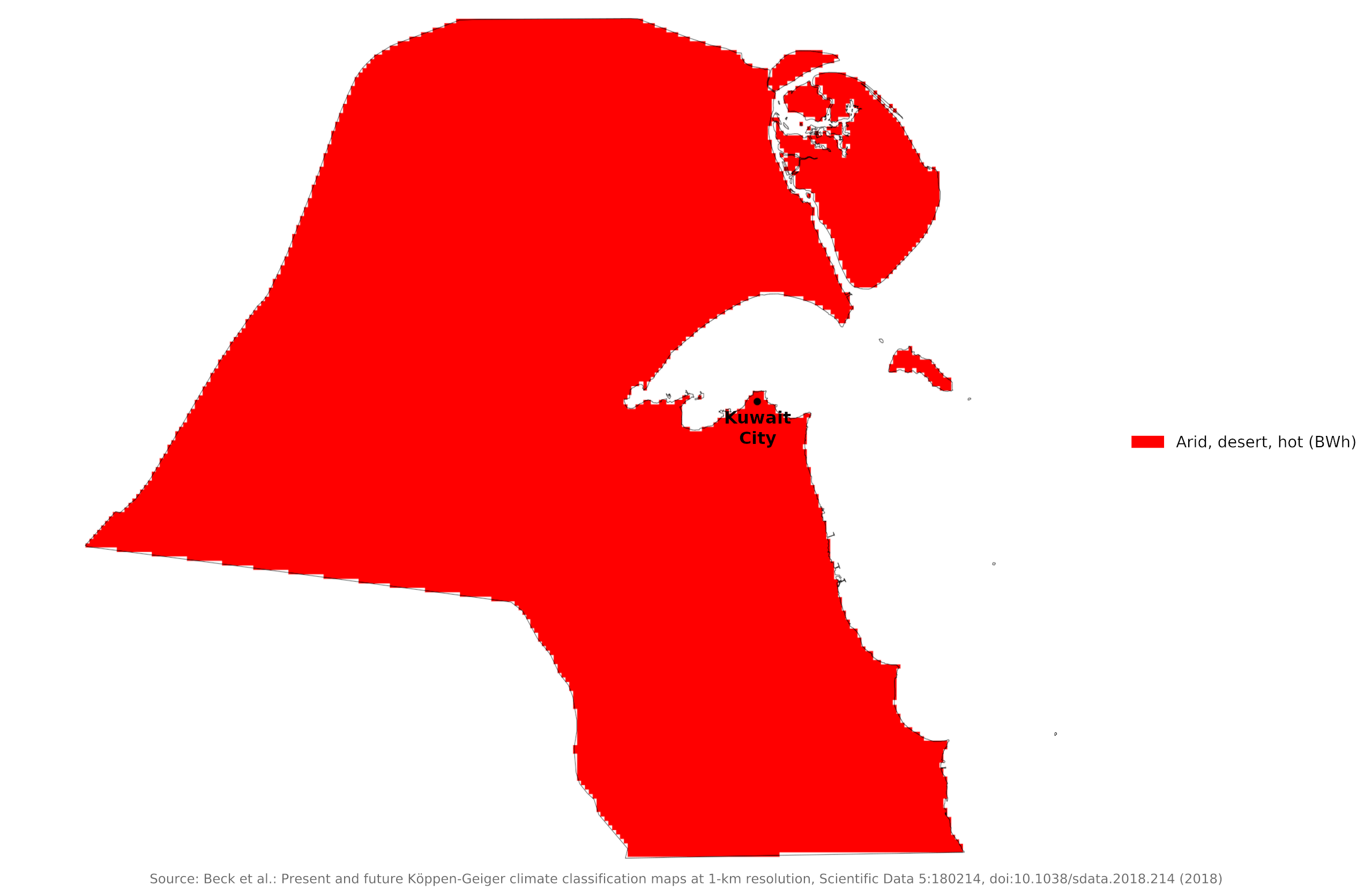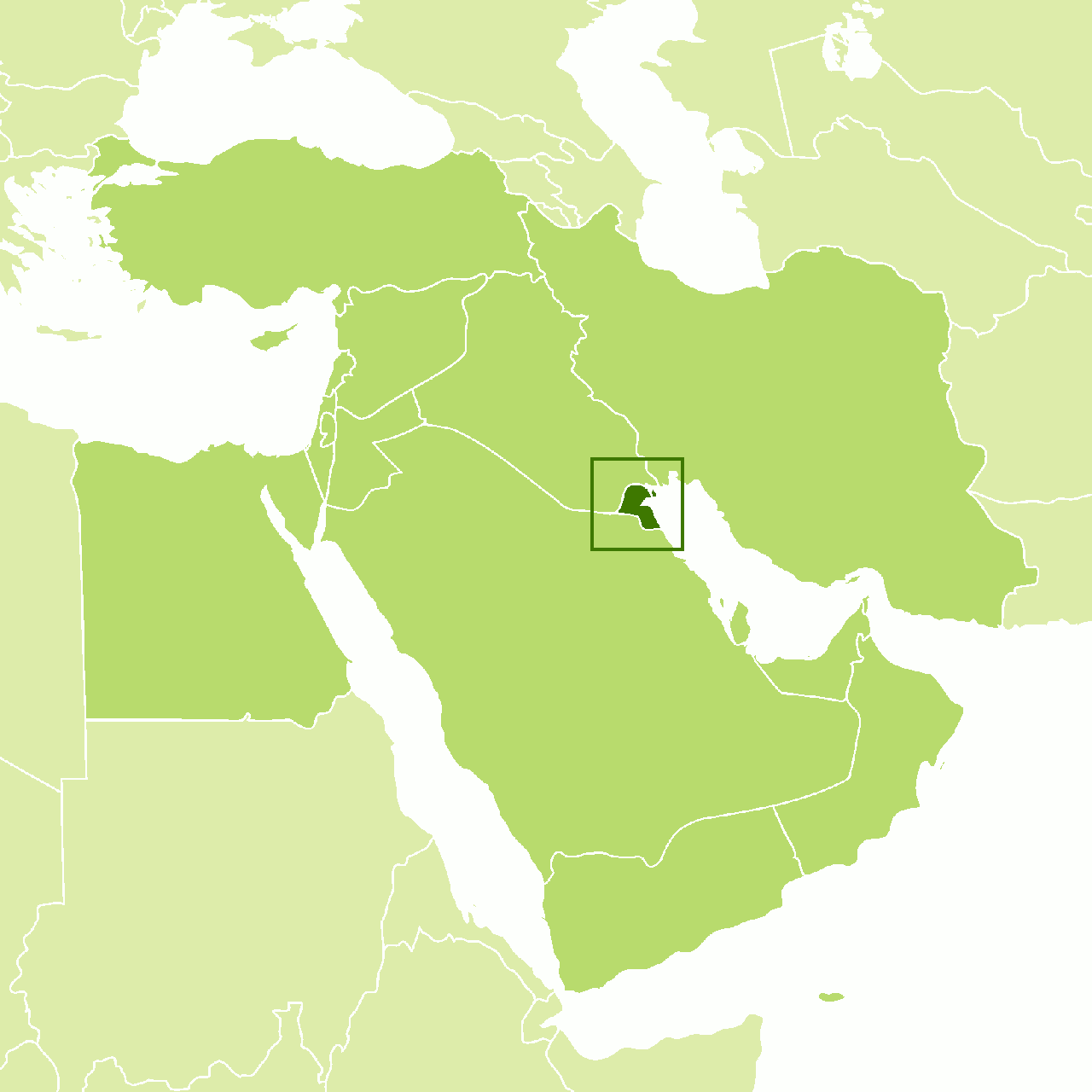The Climate of
Kuwait
 Uqba ibn Nafi mosque, Rumaithiya
Uqba ibn Nafi mosque, Rumaithiya
Climate Map
 Climate map of Kuwait
Climate map of Kuwait
What is the climate of Kuwait like?
Kuwait is one of the smaller states of the Arabian peninsula. It has land borders with Iraq and Saudi Arabia and a coastline on the Gulf. Kuwait has a desert climate, hot and dry with elevated humidity in the coastal region. Winter temperatures are mild and only occasionally does it feel cold, when northerly or northwesterly winds bring cold air from Iran or Iraq. Summers are uniformly hot and temperatures can rise very high when hot winds blow from the heart of Arabia.
During the summer, which lasts roughly from May to October, the air generally is dry, but southeasterly winds often raise daytime humidity to 90% for a few weeks in August or September. Summer temperatures range from 29°C (84°F) in the morning to more than 45°C (113°F) in the shade at noon. The summers are relentlessly long, punctuated mainly by dramatic dust storms in June and July when northwesterly winds cover the cities in sand. In late summer, which is more humid, there are occasional sharp, brief thunderstorms. The prevailing northwesterly wind, which exerts a cooling influence in summer, is called the shamal.
By November summer is over, and cooler winter weather sets in, dropping temperatures to as low as 5°C (41°F) at night; daytime temperature is a little above 20°C (68°F). Between November and April, the climate is pleasant. Frost is almost unknown on the coast but can occur in the interior. Rain is more common and falls mostly in the spring.
Annual rainfall, which averages about 125 millimeters (5 inches), comes in the form of showers or storms between October and April. There are very few rainy days. Cloudbursts have amounted to as much as 64 millimeters (2.5 in) of rain in one day. Annual rainfall has ranged from as little as 25 millimeters (1 inch) a year to as much as 325 millimeters (13 inches).
On the coast temperatures are a little lower than inland but the heat is rendered even more uncomfortable by the high humidity. Another unpleasant feature of the weather is the occasional sandstorm when strong winds blow from the interior. As in other parts of Arabia there is some danger of heat exhaustion or even heatstroke during the hottest weather.
| Climate data for Kuwait City | |||||||||||||
|---|---|---|---|---|---|---|---|---|---|---|---|---|---|
| Month | Jan | Feb | Mar | Apr | May | Jun | Jul | Aug | Sep | Oct | Nov | Dec | Year |
| Average high °C (°F) | 19.5 (67.1) | 21.8 (71.2) | 26.9 (80.4) | 33.9 (93.0) | 40.9 (105.6) | 45.5 (113.9) | 46.7 (116.1) | 46.9 (116.4) | 43.7 (110.7) | 36.6 (97.9) | 27.8 (82.0) | 21.9 (71.4) | 34.3 (93.7) |
| Daily mean °C (°F) | 14.0 (57.2) | 15.9 (60.6) | 20.5 (68.9) | 26.7 (80.1) | 33.2 (91.8) | 37.2 (99.0) | 38.7 (101.7) | 38.2 (100.8) | 35.0 (95.0) | 29.1 (84.4) | 21.2 (70.2) | 15.9 (60.6) | 27.1 (80.8) |
| Average low °C (°F) | 8.5 (47.3) | 10.0 (50.0) | 14.0 (57.2) | 19.5 (67.1) | 25.4 (77.7) | 28.9 (84.0) | 30.7 (87.3) | 29.5 (85.1) | 26.2 (79.2) | 21.5 (70.7) | 14.5 (58.1) | 9.9 (49.8) | 19.9 (67.8) |
| Average precipitation mm (inches) | 30.2 (1.19) | 10.5 (0.41) | 18.2 (0.72) | 11.5 (0.45) | 0.4 (0.02) | 0.0 (0.0) | 0.0 (0.0) | 0.0 (0.0) | 0.0 (0.0) | 1.4 (0.06) | 18.5 (0.73) | 25.5 (1.00) | 116.2 (4.57) |
| Source: World Meteorological Organization | |||||||||||||
References
- E. A. Pearce, Charles Gordon Smith, (1990) The Hutchinson World Weather Guide, John Murray Press. ISBN 1859863426
- Timothy L. Gall, (ed.), (2003), Worldmark Encyclopedia of the Nations, Eleventh Edition, Thomson Gale
- Federal Research Division, Library of Congress, (1994), Persian Gulf states: country studies. Claitor's Pub. Division. ISBN 0844407933
- Hugh Chisholm, (ed.), (1911), Encyclopædia Britannica, Eleventh edition, Cambridge University Press
The Climate of
Kuwait

In summary:
Kuwait has a hot, desert climate. Summer temperatures range from 29°C (84°F) in the morning to more than 49°C (120°F) in the shade at noon. Winter temperatures average between 10°C and 20°C (50°F and 67°F).
Annual rainfall, which averages about 125 mm (5 in), comes in the form of showers or storms between October and April.